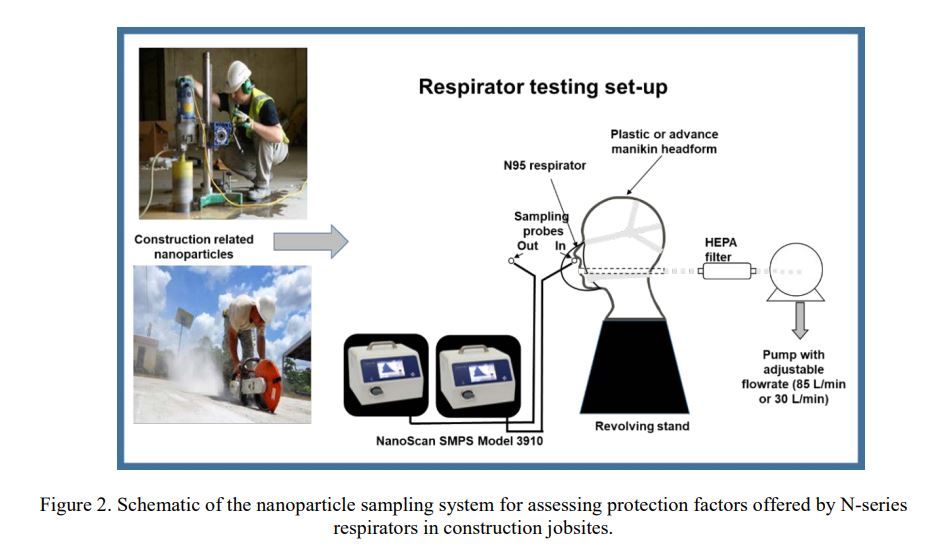Are construction workers well protected against injuries and illnesses related to nanoparticles?
 The dust generated on construction sites can have adverse health effects on construction workers. Different activities on construction sites can generate different types of nanoparticles and ultrafine particles that can lead to serious respiratory diseases such as silicosis and lung cancer. To prevent these diseases the NIOSH recommend that workers use N95 respirators. However according to a recent pilot study conducted by the Center for Construction and Research Training (CPWR), these respirators might not protect construction workers properly depending on the task that they execute.
The dust generated on construction sites can have adverse health effects on construction workers. Different activities on construction sites can generate different types of nanoparticles and ultrafine particles that can lead to serious respiratory diseases such as silicosis and lung cancer. To prevent these diseases the NIOSH recommend that workers use N95 respirators. However according to a recent pilot study conducted by the Center for Construction and Research Training (CPWR), these respirators might not protect construction workers properly depending on the task that they execute.
The CPWR used two manikins fitted with two types of NIOSH approved N95 masks, the pleated N95 mask and the foldable N95 and assessed their respiratory protection against ultrafine particles and nanoparticles in various construction environments.
The researchers first found out that it was very difficult to get the N95 masks themselves as they were out of stock or back ordered for several weeks and substitutes had to be used for the studies.
The researchers effectuated their test around 3 different types of construction site activities:
- Concrete blasting and grinding
- Wooden building frameworks construction
- Soil moving at a large construction site
Researchers found that for all 3 activities the N95 respirators, pleated or folded may not provide 95% protection for multiple sizes of nanoparticles. They also found that the pleated N96 masks were more efficient than the foldable ones for activities related to soil moving or wood building.
They found that construction workers, especially masons, engaged in concrete blasting and grinding activities were the most exposed to nanoparticles. The study found that these particular workers are exposed to a level of nanoparticles that is often above the OSHA permissible exposure limit (PEL) for silica and are at risk of developing silicosis, a lung disease that can be deadly. This is mostly because concrete slabs, masonry bricks and blocks contain a high level of silica.
The second most exposed to nanoparticles were wood workers. Workers involved in timber-based construction are those most commonly exposed to wood dust and are the most at risk of developing various diseases such as occupational asthma, mucosal and other allergic or non allergic respiratory illnesses as well as dermatitis.
Download the complete study here
 New York Personal Injury Attorneys Blog
New York Personal Injury Attorneys Blog


